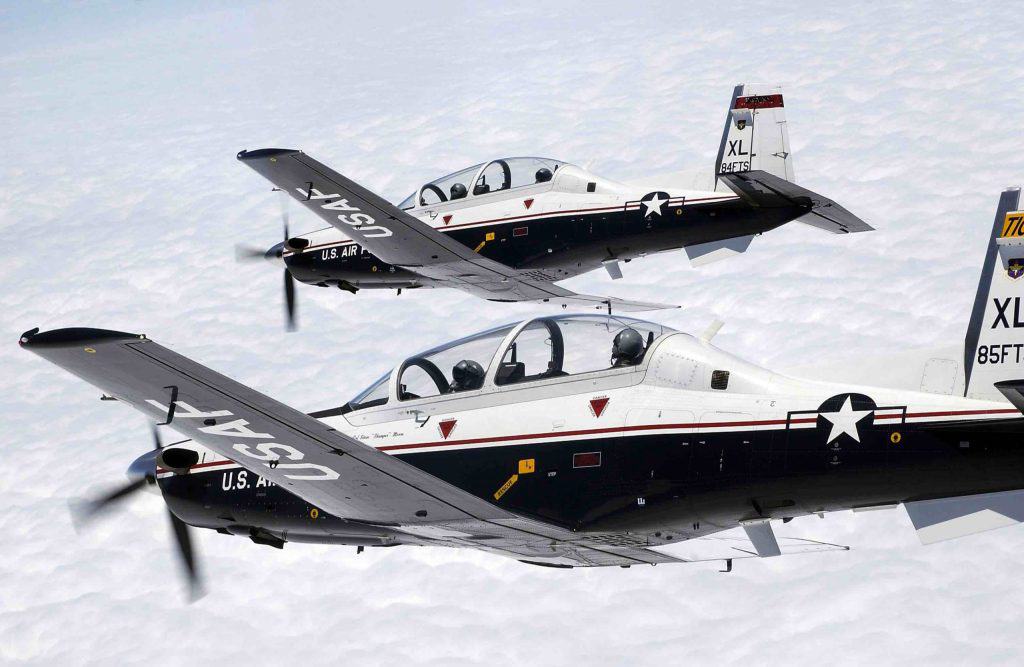How to Get to Pilot Training

If you have a desire to fly and a passion for aviation, then you are probably actively trying to figure out how you get to pilot training. The good news is that there are multiple ways to get that coveted pilot training slot. This article will help you determine which path is the best one for you to pursue your dream.
If you have a desire to fly and a passion for aviation, then you are probably actively trying to figure out how you get to pilot training. The good news is that there are multiple ways to get that coveted pilot training slot. This article will help you determine which path is the best one for you to pursue your dream.
UPT Slots
If you are trying to become a pilot in the United States Air Force, you are going to be competing for an Undergraduate Pilot Training (UPT) slot. There are traditionally three ways to get a UPT slot and begin your flying career with the Air Force. The first is probably the path most people think of—through the active duty Air Force. The second less known and less restrictive option is to compete for a UPT slot through individual Guard and Reserve units. Third, if you already serve on active duty or in the Guard/Reserve as a non-rated officer or enlisted member, then you too can compete for a UPT slot when they are advertised.
Active Duty
Active duty is by far the most widely known and popular way of receiving a UPT slot. While active duty does have the most UPT slots when compared to the other avenues, you need to understand that you will incur a 10 year UPT commitment after you successfully complete pilot training. Once you graduate from UPT, you will enter the active duty force—that means you’ll move approximately every three years to different units across the globe. As an active duty pilot, you could get selected to do other jobs besides flying as well, such as staff tours and Air Liaison Officer tours.
There are two main paths to choose from to obtain a UPT slot through the active duty. The first path is to compete to attend the United States Air Force Academy (USAFA). USAFA is a four year service college in Colorado Springs, Colorado. It is highly competitive and individuals need to start applying in the middle of high school. Even if you are chosen to attend and successfully graduate from USAFA, you’ll still have to compete for a UPT slot. However, your chances of going to pilot training are very good; on average, USAFA graduates get approximately 500 UPT slots per year—about 50% of cadets end up with a slot. If you are interested in applying to the Academy, visit the USAFA website and contact your nearest Academy Liaison Officer to learn more about the process.
The second path to a UPT slot through active duty is through the Reserve Officer Training Corps (ROTC). ROTC units are located at over 1,100 college campuses across the globe. After their junior year of college, UPT hopefuls start the ROTC process of competing for UPT slots. Your chances of being awarded a UPT slot depends on your Order of Merit ranking, which is determined by evaluating cadets in a multitude of different categories. The results of this process rank order the cadets nationwide. UPT slots are awarded based on where each candidate ranks on the list.
Guard/Reserve
Both Air National Guard and Air Force Reserve units award UPT slots to individuals around the nation each year. One of the largest differences between following the active duty path versus the Guard/Reserve path is the application process. The Guard and Reserve hire more individuals “off the street” or with no military background than any other path. Additionally, the selection process happens much quicker and more frequently than the Active Duty path. If you did not attend USAFA or join your college’s ROTC program, but you have a college degree and a desire to become a pilot, then competing for a UPT slot through the Guard or Reserve is a great place for you.







